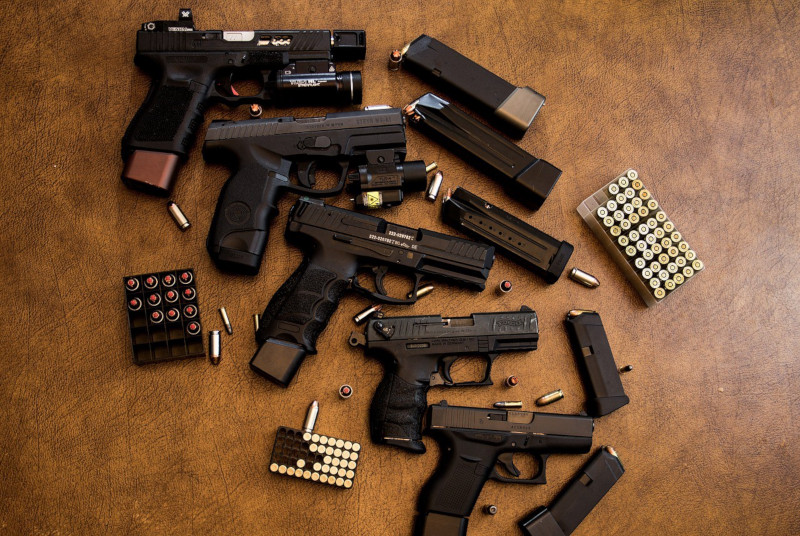Boise Airport says no to your thousands of handguns

Earlier this year, Boise Airport instituted a new anti-firearm campaign intended to curb attempts by passengers to transport their often loaded handguns in their carry-on luggage through TSA checkpoints and onto their departing flights.
Airport goers will find large decal or sticker-style posters featuring cartoon-like handguns on floors and doors (and some standalone pedestal signs, if I recall), especially upon entering the airport at the baggage claim level. The hard-to-miss signage somewhat cheerfully reminds you that attempting to transport your “little friend” (á la Al Pacino’s Scarface) through a TSA checkpoint there will result in a fine amounting to close to $4k.
In March of this calendar year, two handguns — a .38 calibre Smith & Wesson and a 9mm Smith & Wesson M&P — were discovered, loaded with multiple rounds of ammunition each, within a short time period. They were caught utilizing X-ray scanner technology during routine screenings of all carry-on baggage.
TSA already reserves the right to fine passengers who violate policies prohibiting the transport of such dangerous items many thousands of dollars more — over $13k per violation per person above and beyond whatever other charges and penalties one may face, to be specific. Threats of fines appear to be influencing things very little, though. 2017 was a record year for the discovery of firearms by TSA at airport checkpoints nationwide, with the agency-reported total coming in at 3,957.
Of course, since no security checkpoint system is entirely fail-proof, it is likely that TSA did not catch all offenders, implying that the total number of sidearms that traveled through airports was actually higher.
While Boise doesn’t even make the top 10 list of airports for highest number of firearms found at TSA checkpoints, it does appear to distinguish itself from other airports with said campaign. Over the last year, I have traveled through multiple domestic airports on both coasts of the United States and in the country’s interior, and until earlier this year at BOI, had yet to see such a proactive, in-your-face campaign as this one aimed at preventing the transportation of handguns into airplane cabins.
Geographically-speaking, the top 10 airports for handgun discovery were somewhat spread out throughout the country, though many were located in “red” states. However, one notable standout was SeaTac (SEA) in Seattle, a city popularly known as one of the most politically progressive in the nation, which snagged the 10th spot with 75 found (80% of them still loaded with ammo).
Firearm discoveries by TSA agents have been on the rise every year since 2007. While that could indicate that more passengers are attempting to transport handguns, that could just as easily signify that TSA is simply becoming more effective at detection (or a combination of the two).
These firearms have been discovered mostly loaded. In fact, in 2017, at any given airport out of the top 10, at least 78% of firearms found had ammunition in them. Not to mention that there were additional weapons detected, including hand and smoke grenades and gunpowder, during the last calendar year.
In 2018, the tide does not appear to be slowing. TSA has already discovered hundreds of firearms, most of them loaded and some even chambered, at various checkpoints across the country. In particular, May 14th-20th of this year alone saw 101 firearms found in carry-on luggage, with more than 84% of them containing ammo.
That being said, the new record for any week in question was previously set by the one spanning February 5th-11th of this year, with 104 firearms discovered, of which over 83% were loaded.
(To put the numbers into context, less than 1/5 of one percent of all daily passengers who traveled through 440 federalized airports in 2017 were potentially packing heat, assuming one firearm per individual. Consequently, your chances of being present during one of those discovery incidents would have been extremely slim. What remains concerning, of course, is that many of these weapons were loaded, and the passenger’s intent after all was to transport that firearm into the plane’s cabin.)



